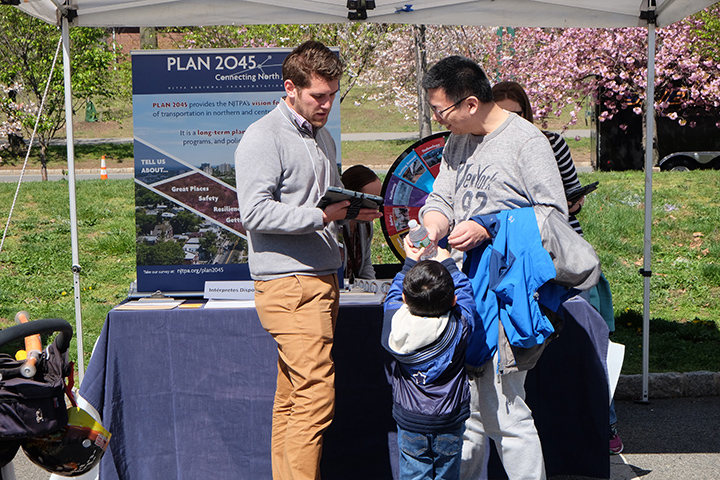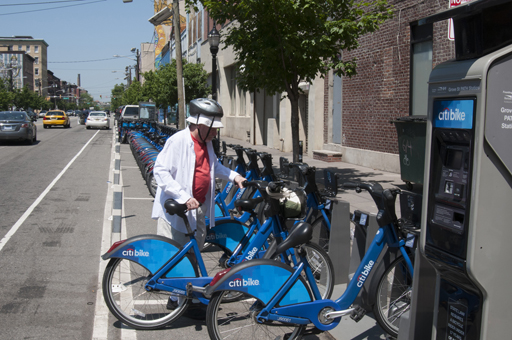 Using Social Media to Effectively Engage the Public
Using Social Media to Effectively Engage the Public
Social media is now part of the way we live, not only for keeping in touch with our friends and relatives but increasingly for getting news, shopping and other activities. With the broadening reach of social media, it makes sense that it can become an effective part of public engagement by transportation agencies.
From 2016 to 2018, researchers at the University of Minnesota investigated social media options for effective public involvement in Minnesota. The investigation included phone interviews with more than 800 Minnesotans. It also compared the success of public engagement in four transportation case studies across urban and rural Minnesota, two cases with and two cases without significant social media use.
For each case study, key social media analytics were collected and used analyzing sentiment, likes, retweets, shares, and numbers of comments. Thirty-nine interviews were conducted for each case study. A key focus was on the effectiveness in reaching the state’s diverse populations differentiated by location, race/ethnicity, socio-economic status, and age.
Among the study findings:
- Social media as an engagement tool may overcome societal forces that constrain marginalized communities from participating in the public planning process.
-
- While 90 percent of adults in the United States are online and 69 percent use social media, a social media-only plan may not reach people over the age of 65 or with a high school education.
-
- While one in five people rely on Internet access from their phones, which may eliminate some groups.
-
- Transportation projects with higher social media use had more connections with users.
-
- Social media remains a supplemental tool, it cannot stand alone or be used as a substitute for more traditional approaches for public engagement processes.
-
- Effective use requires consideration of community created social media pages to understand the dynamics of the community.
-
- Employ best practices such as using hashtags or posting original content like videos or live streams, and always stay up to date with changing trends.
-
- Content needs to stay fresh and interesting.
-
- Consider the demographic qualities of the key stakeholders to determine how social media can.
Click here to view the full study
Resarchers:Ingrid Schneider and Kathryn Quick, University of Minnesota
 Using Social Media in Transportation Planning Outreach
Using Social Media in Transportation Planning Outreach
With millions of people turning to social media daily for the latest news from around the world and within their own networks, public agencies are increasingly turning to the popular platforms as a means of involving the public.
Public participation is integral to the transportation planning process, however public attendance as traditional meetings has been underwhelming. Is social media the answer to get the public more involved in transportation planning? A researcher at Texas Southern University explored this question and gauged the extent of social media use in transportation planning among local government agencies.
This research included a case study of Regional Councils of Governments (RCOGs) in Texas. The RCOGs bring together local governments to discuss regional issues including transportation, housing and the environment.
The study, published in 2017, found that about half of the RCOGs who responded to surveys use social media for public engagement. However, the RCOGs that use social media said they consider it a tool to relay information to the public and complement traditional means of communication. The RCOGs cited budget constraints as the reason for not using social media to more actively engage the public.
The researcher notes that social media can be a cost efficient and effective means for public involvement. The research cites several best practices including using social media to inform the public of the decision making process in a timely manner; communicating technical information in a way the public can understand it; and using social media to communicate with targeted audiences.
The researcher notes that social media can be used as two-way communication with the public and that government agencies should develop organizational policies to facilitate this.
But state and federal agencies will have to set an example for other public entities to follow when it comes to using social media effectively to engage the public, the researcher concludes.
“It is only though greater dissemination of knowledge on best practices in social media use by federal and state governments that we can expect to see RCOGs making use of social media as an efficient forum in a two-way communication with people and without endangering the dignity of the user and the organization,” she states.
Click here to view the full study
Resarcher: Sarmistha R. Majumdar, Texas Southern University
 The Effect of Regional Land Use Policies on Walkability
The Effect of Regional Land Use Policies on Walkability
With more people looking to live in communities where key amenities like restaurants, shops and transit stations, are just a short walk away, many communities are responding by implementing complete streets plans, pushing for transit oriented development and focusing on smart growth and related policies.
Walking and bicycling not only offer important health benefits to a community’s residents, they can also boost economic development and provide environmental benefits.
However, living in a walkable town within a larger region that is heavily auto-oriented can limit opportunities to walk and bike, even for those who’d like to.
Researchers at the University of Maryland recently took a more regional approach to walkability, considering how the county-level built environment and regional accessibility can affect the behavior of residents who want to walk.
This study, which the American Society of Civil Engineers recently published, focused on the Baltimore, Maryland and Washington, D.C., metropolitan areas and used modeling to explore regional impacts on walkability in a community.
Data included comparison of local Walk Scores, a measure of objective walkability factors. The researchers found “the average block size seems to be the most influential built environment factor at the county level in determining walking travel behavior.” This, they said, indicated that “densely-populated county structures with more employment opportunities and better street connectivity throughout the county are correlated with increased levels of walking trips.”
The research also found that improved regional access to transit could encourage residents to walk more.
Click here to view the full study
Researchers: Jina Mahmoudi and Lei Zhang, University of Maryland
Autonomous Vehicles as Moral Machines
In the coming era of automated vehicles, crashes are inevitable and built-in logic will determine how the vehicles react to approaching danger. In some cases, they will have life and decisions to make. Who decides how vehicles should be programmed? And what standards should they follow?
Two million people considered some life-and-death scenarios vehicles may face and weighed in on the choices they should make. They were taking part in a study by MIT researchers who designed a multilingual online survey called the “Moral Machine.” Their findings were just published in Nature, an international journal of science.
The scenarios were a variation on the “Trolley Problem,” the classic thought experiment involving a runaway trolley and whether one should act to kill only one person or doing nothing and let the trolley kill several people. In the Moral Machine survey, participants generally showed preferences for sparing the lives of humans over the lives of other animals; sparing the lives of many people rather than a few; and preserving the lives of the young, rather than older people; and for sparing law-abiding bystanders rather than jaywalkers.
The online survey gathered 40 million decisions in 10 languages from 2.3 million people in 233 countries and territories. While the researchers did not find significant differences among demographic groups, there were differences among geographic clusters of countries grouped as western, eastern and southern. Among the findings: “Respondents in southern countries had a relatively stronger tendency to favor sparing young people rather than the elderly, especially compared to the eastern cluster.”
The researchers conclude: “Autonomous vehicles will cruise our roads soon, necessitating agreement on the principles that should apply when, inevitably, life-threatening dilemmas emerge. The frequency at which these dilemmas will emerge is extremely hard to estimate … Regardless of how rare these cases are, we need to agree beforehand how they should be solved.”
Click here to view the full research
Researchers: Edmond Awad, Sohan Dsouza, Richard Kim, Jonathan Schulz, Joseph Henrich, Azim Shariff, Jean-François Bonnefon & Iyad Rahwan, Massachusetts Institute of Technology
Circumstances of Pedestrian Deaths
New research has shed light on the when, where, and how of the rising level of pedestrian deaths in the United States, which have increased by 46 percent from 2009 to 2016. A study sponsored by the Insurance Institute for Highway Safety looked at environmental, roadway, vehicle and personal factors to see how fatalities evolved in recent years.
According to the research, the largest increases in pedestrian deaths during 2009–2016 occurred in urban areas (54 percent increase), on arterials (67 percent increase), at non-intersections (50 percent increase), and in dark conditions (56 percent increase). This is in keeping with historical patterns of the circumstances of most pedestrian fatalities. As deaths have increased “precipitously” in recent years, the study authors call for renewed countermeasures to focus on preventing crashes in urban areas, on arterials, away from intersections, and in the dark.
Among the measures they point to are road diets (a reduction in travel lanes), median crossing islands, pedestrian hybrid beacons, adding sidewalks, better road lighting, better vehicle headlights and automated speed enforcement.
The study also found an 82 percent increase in the number of SUVs involved in fatal single-vehicle pedestrian crashes, far larger than the increase for other vehicle types. This reflects the growing popularity of SUVs. Because of their size, SUVs are associated with increased risks of severely injuring or killing pedestrians. Technology may provide some solutions including automatic emergency braking systems designed to detect pedestrians. Subaru vehicles with the systems had pedestrian injury insurance claim rates 35 percent lower than the same vehicle models without the system.
The authors conclude that, “To have the largest effect in halting the escalation in pedestrian fatalities, countermeasures should be implemented where the rise in fatalities has been greatest.”
Click here to view the full research
Researchers: Wen Hu and Jessica B. Cicchino, Insurance Institute for Highway Safety, United States
 Access to Bike Shares Can Improve Health
Access to Bike Shares Can Improve Health
Aside from providing transportation alternatives and recreational opportunities, bike shares can also improve health in a community, when residents have access to them, according to a study of the Rochester Bike Share Program.
Common Ground Health and the Genesee Transportation Council conducted a Health Impact Assessment of the program as they work to incorporate health-based transportation decisions in the Genesee-Finger Lakes region of New York.
Rochester Bike Share launched in 2017 following a feasibility study that was completed in 2015. The city signed an agreement with Zagster, Inc. to provide a 24-7 bike share program from April through November. The bikes can be rented at an hourly rate. The program exceeded its initial goal of 250 bicycles and 25 bike-share stations, growing to 340 bicycles and 46 stations.
The assessment found that while successful the program may be limiting its utilization and its ability to positively affect the health of community members. The limitations include the location of the bike share stations and their proximity to neighborhoods; the payment system’s requirement that users have both credit cards and smartphones with Bluetooth technology; and the lack of bike share stations near supermarkets that offer healthy food options.
The report makes several recommendations for improving the health of the community through the bike share by locating stations near supermarkets, farmers markets and parks. It also suggests improving the bicycle infrastructure in Rochester to encourage increased usage, and raising awareness of the health benefits of cycling. The assessment also recommends improving the payment system to reduce barriers, particularly among low-income residents.
Click here to read the full report
The Health Impact Assessment was prepared by Benjamin Woelk, M.S.